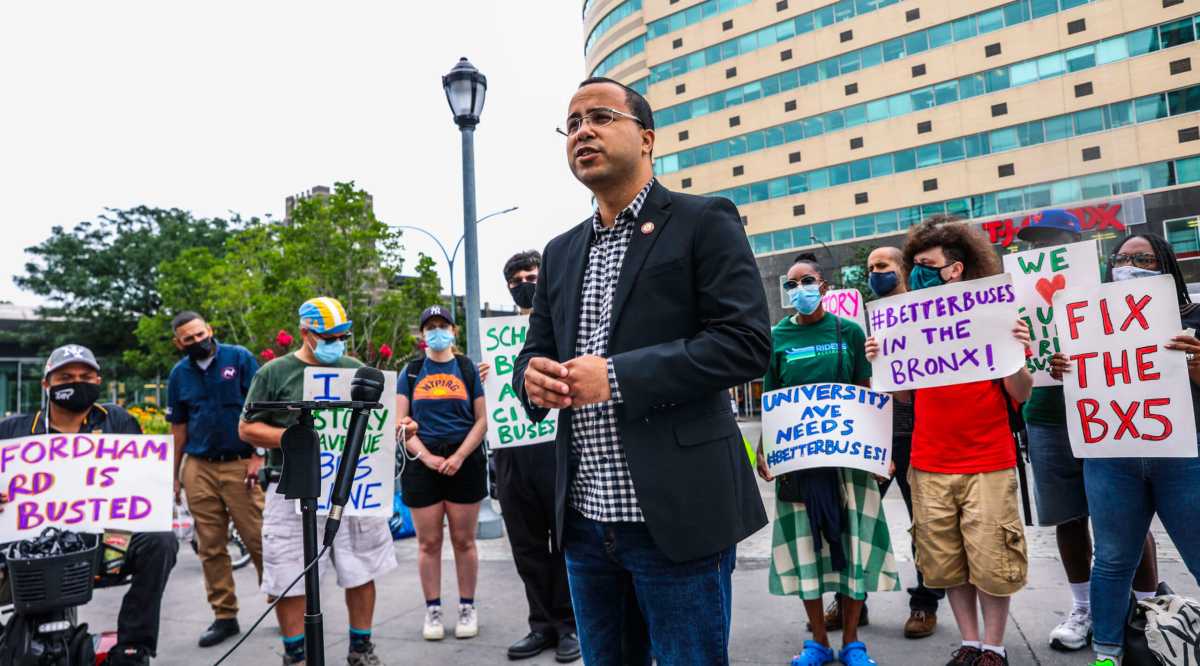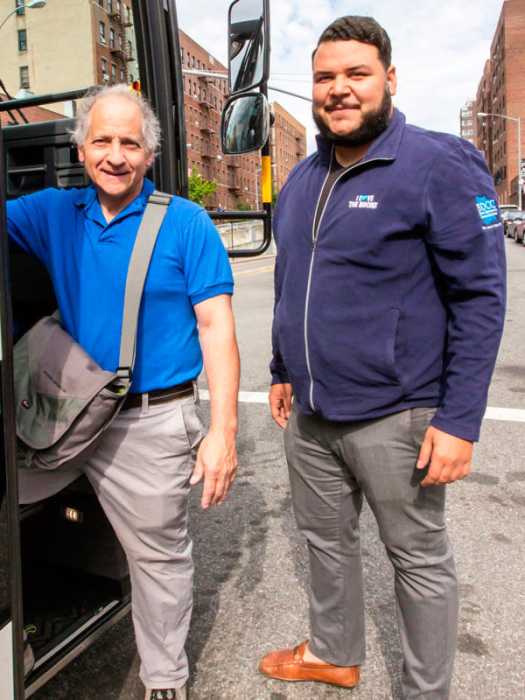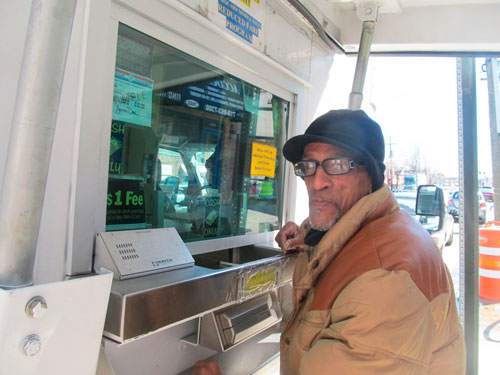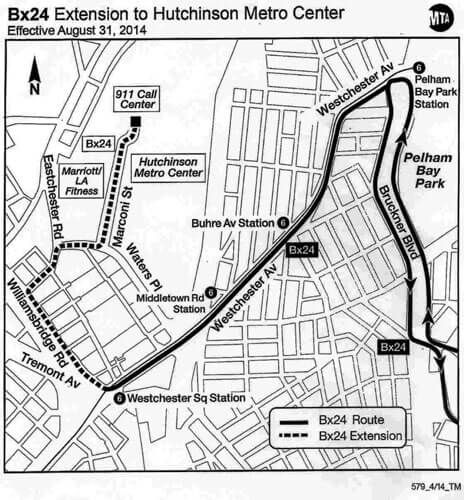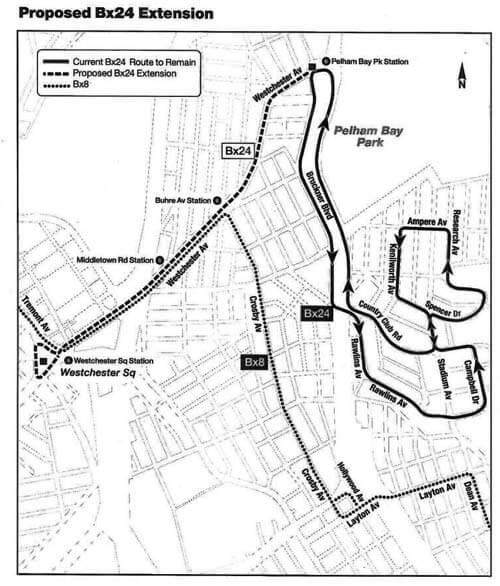Every weekday, Desiree Walker said she has to carve out 40-50 minutes to wait for the South Bronx-bound Bx4A bus. Walker, a lifelong resident of the borough, said that relying on Bronx buses is “an everyday nightmare.”
With experiences like Walker’s commonplace, transit advocates are now calling on outgoing Mayor Bill de Blasio, a Democrat, to uphold his promise to install 28 miles of new and improved busways and bus lanes in 2021 and improve a transit infrastructure in the Bronx that has led to infamously long wait times and congested roads.
“The Mayor promised 28 miles of new and improved busways this year and so we’re trying to hold him accountable to that promise by putting his toes to the fire,” said Jolyse Race, senior organizer for transit advocacy group Riders Alliance. “I’m not sure if any of the Bronx bus projects have been implemented yet and he promises 20 miles last year and only 13 were completed, so he has a history of not following throughout his promises.”
Officials from transit groups such as Riders Alliance, who took part in an Aug. 4 rally in Fordham, say that solutions such as car-free busways and lane conversions will alleviate high-congestion areas such as Fordham Road, Gun Hill Road, Story Avenue and University Avenue.
New York’s northernmost borough has a 57-bus transit network that serves more than 79,000 people who commute between the hours of midnight and 5 a.m, which was the highest in the city, according to pre-pandemic Census data. The Bronx is also home to two of the busiest bus routes in the city, the Bx 12 and Bx19, which had a total ridership of 7.9 million and 5.4 million in 2020, respectively.
The Bronx and Staten Island are the only boroughs in the city that do not have car-free busways — a de Blasio administration effort that constructed 20 miles of bus lanes and car-free busways in Manhattan, Brooklyn and Queens in 2020 — which reportedly improved travel times for busy bus routes such as the M14 route by 47%.
Advocates say that if car-free busways were implemented at Fordham Road, one of the busiest Bronx roadways, it would go a long way in reducing traffic accidents and improving the borough’s environmental health.
Transportation Alternatives is one of 80 organizations that is promoting an initiative called 25×25, which seeks to transform 25% of NYC’s car space into pedestrian spaces by 2025.
More than 75% of New York City’s current 91-square mileage of street space is dedicated to moving and parked vehicles, despite 54.6% of the city’s population not owning a vehicle. According to transportation advocates, only 0.2% of NYC streetscapes are reserved for car-bus lanes and 0.93% for bike lanes.
“The Bronx is the only borough along with Staten Island that doesn’t have car-free busways and we need it in the Bronx because a majority of people who live here don’t own a car,” said Luke Zavados, a member of Transportation Alternatives. “We need a more equitable distribution of street space [in New York City].
Under the city Department of Transportation’s “Better Buses Action Plan,” current projects are underway to add an eastbound contraflow bus lane on the busy Westchester Avenue between the Burr Avenue bus route in Pelham Bay and improving bus speed, bus reliability and pedestrian safety along Story Avenue, Bronx River Avenue, and White Plains Road.
In 2020, two Bronx bus projects — added boarding islands and protected bike lanes to Edward L. Grant Highway and traffic improvements on East 149th Street from Exterior Street to Southern Boulevard— were completed.
As a part of the MTA’s citywide bus network redesign plan — which started in Staten Island in 2018 — the Bronx was set for bus route improvements in the summer of 2020 but COVID-19 brought those plans to a screeching halt.
MTA did unveil a final plan for Bronx bus network improvements which called for bus stop removals and lane alterations along the Eastchester Road to Broadway routes and more improvements to reduce congestion and wait times along the busy Story Avenue and University Avenue routes.
Sonia Vazquez, who commutes on the West Farms-bound Bx9 told the Bronx Times that her work-to-home commutes are often packed with riders who have to wait nearly 30 minutes for a bus to arrive.
“If I see the bus go past the [3 Avenue/East Fordham Road] station, I know I should just call a Lyft because that bus ain’t coming for another 30-35 minutes and I’ll be late to work,” she said. “People don’t understand a late bus can affect your paycheck or be the difference in you missing a doctor’s appointment.”
For Bronx officials, investment in the Bronx’s transit infrastructure has been historically lacking.
“The city invests a lot in terms of hiring the best [transportation] experts and creating the best commuting environments downtown, but we don’t see the same in the Bronx,” said Democratic NYC Councilman Oswald Feliz, of District 15. “The bus problem we have in Fordham Road is the best example. We’ve had congestion for decades, with very little time and investment to fix and we need equitable transportation for all parts of the city.”
Fixing bus routes is also a systemic issue, advocates say, as bus riders are more likely to be people of color, immigrants and older than subway riders, according to year-by-year MTA demographic data.
“Unreliable buses also cause financial harm as [c0mmuters] lose wages,” said Michael Beltzer, a community organizer. “Bus service in the Bronx is so slow that I had to bike [to Fordham Plaza] from Parkchester because a bus would take 40 minutes and that’s not right. Time after time, I face long and convoluted commutes, wait for a bus that is out of service or is stuck behind cars and long [stop] lights.”‘
Ridership dropped precipitously in the early months of the pandemic — roughly 40% in March — but has recovered and is regularly averaging more than 1 million trips since July 2020, representing more than half of bus pre-pandemic ridership, according to the MTA in April of this year.
Advocates say that with NYC schools reopening, bus ridership will continue to approach pre-pandemic ridership, making the bus projects promised by de Blasio a timely matter for riders and the next administration attempting to tackle the city’s evergreen transit issues.
“Buses became an important means of transportation for essential workers during the pandemic, and that ridership is only going to increase with students heading back to school in-person,” said Race, of the Riders Alliance. “The promises that the Mayor has made can help the next administration build upon an equitable transit system for all New Yorkers.”
Reach Robbie Sequeira at rsequeira@schnepsmedia.com or (718) 260-4599. For more coverage, follow us on Twitter @bronxtimes and Facebook @bxtimes.

